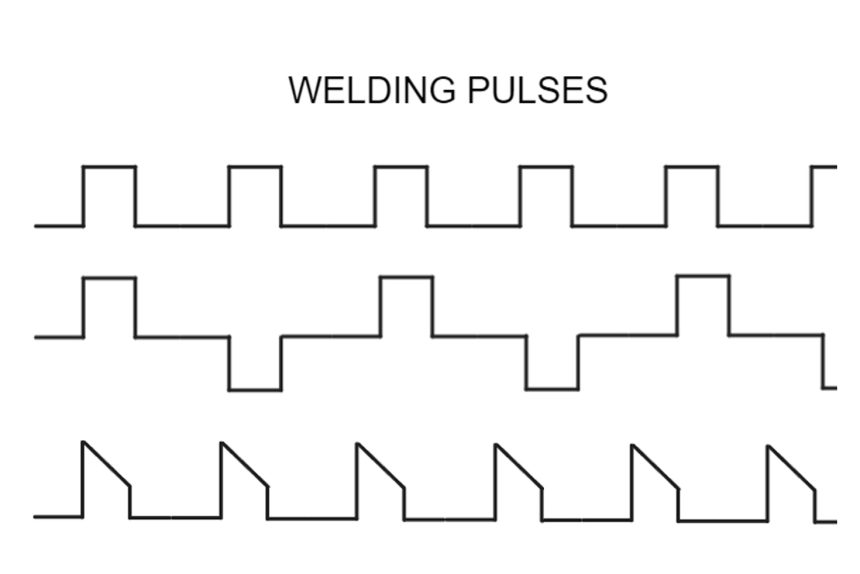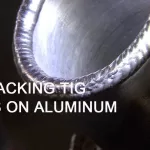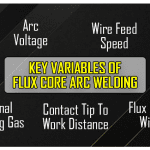When using a TIG welder to weld aluminum, it can be a challenging process due to its higher heat requirements compared to mild steel. The voltage needed for aluminum welding typically falls within the range of 21 to 24 Volts.
Read ahead to find out more about pulse welding.
Welding Town
For thicker aluminum ranging from 14 ga. to 18 ga., a TIG welder is suitable. For thinner aluminum, a TIG welder is also a viable option. One welding technique that can be used is pulse welding.
Pulse welding involves alternating between low and high currents to weld through various materials. This technique allows for better control and precision during the welding process. It’s important to practice and fine-tune your skills to achieve high-quality aluminum welds with a TIG welder.
What is Pulse Welding?
A pulsed MIG welding system offers a solution to bridge the gap between welding aluminum and getting the best return on your investment.
Pulse welding involves alternating between low and high currents during the welding process. A pulse welding system typically includes a foot pedal that allows you to control and adjust the heat. Unlike regular MIG welding, the output in a pulse welder is delivered in pulses rather than a stable amperage.
When welding aluminum, you cannot use the same approach as you would with steel. Aluminum is more sensitive to excess heat, which can lead to warping, burn-through on thin materials, and increased spatter. These issues can be effectively addressed by using pulse welding.
The traditional MIG welding process may present challenges in meeting productivity goals and finding skilled welders who can work with both steel and aluminum. A pulse MIG welding system can overcome these challenges and provide efficient and effective welding for aluminum projects.
When Should You Use Pulsed TIG?
Pulsed TIG systems are highly suitable for welding aluminum and offer several advantages. If you frequently work with both aluminum and steel that is less than ½ inch thick, investing in a pulsed TIG system is a wise choice.
For materials ranging from 3 to 6 mm and when a true spray arc is desired, a pulsed MIG welder is recommended. It works effectively during a transition or mixed arcing phase. However, if you plan to use a pulse welder on steel thicker than 10mm, the welding process will be slower.
In a pulsed TIG system, you will get one droplet per pulse cycle. However, modern pulse systems operate at a higher deposition rate, which speeds up the welding process for operators.
Using a pulsed TIG welder is advantageous when you require narrow but deep penetration during welding. Additionally, it reduces porosity in aluminum welds and produces better color results. Moreover, pulsed TIG welders are more cost-effective to purchase compared to standard spray MIG welders.
There are numerous pulse welding machines available on the market. For those interested in pulse welding, I recommend considering lower to mid-level machines in terms of price and features. Examples of such machines are the Perfect Power TIG200ACDC TIG Welder and the PRIMEWELD machine.
Why Should You Use Pulse MIG for Aluminum?
Aluminum and mild steel have distinct characteristics that require different welding approaches. Due to its lower density, higher heat conductivity, lower melting temperature, and increased ductility, aluminum necessitates a specific welding method. Here’s why a pulsed MIG welding technique is often preferred for aluminum welding:
Heat Input Control: Pulsed MIG welding allows for precise control of heat input, which is crucial for aluminum welding. By alternating between high and low currents in a pulsed manner, the heat input can be carefully managed. This helps prevent excessive heat buildup, reduces the risk of warping, and minimizes burn-through on thin aluminum materials.
Spatter Reduction: Pulsed MIG welding helps to minimize spatter during aluminum welding. The pulsing action of the welding current allows for better control and finer droplet transfer, resulting in reduced spatter formation. This leads to cleaner welds and less post-weld cleanup.
Increased Deposition Rate: Modern pulsed MIG welding systems offer higher deposition rates, allowing for faster welding speeds. This is advantageous when working with aluminum, as it enables greater productivity without compromising the quality of the welds.
Improved Penetration and Weld Appearance: Pulsed MIG welding can provide a narrow and deep penetration profile, which is desirable for aluminum welding. This technique helps achieve better fusion between the base metal and filler material, resulting in strong and aesthetically pleasing welds. It also contributes to reduced porosity in the weld.
Cost-Effective Solution: Pulsed MIG welding is a cost-effective option for aluminum welding compared to other methods like TIG welding. It offers efficient and high-quality results at a lower equipment and operational cost.
Considering these factors, utilizing a pulsed MIG welding technique for aluminum welding is a practical choice that ensures precise control, reduced spatter, improved penetration, and cost-effectiveness.












